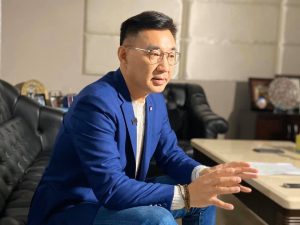On March 7, Johnny Chiang was elected as the party chair of the Kuomintang (KMT). At the age of 48, Chiang represents a younger image for KMT at a time when the party’s detachment from Taiwan’s young voters has been attributed to the overrepresentation of its senior politicians. Chiang’s victory signals that after KMT’s major loss to Tsai Ing-wen of the Democratic Progressive Party (DPP) in 2020, powerful seniors within the party are finally giving the reins to the younger generations long stuck at the fringe of the party’s decision-making body.
It was, however, reported that Chang didn’t receive a congratulatory telegram from the Chinese Communist Party (CCP) leader, something his predecessors have received over the past 15 years of CCP-KMT relations. The media was quick to pick up on the anomaly and has generally interpreted the mainland’s silence as the result of Chiang’s intention to divert away from recognizing the “1992 Consensus,” since he has described the consensus as being obsolete.
It would be overly hasty, however, to interpret the CCP’s frosty response as displeasure with Chiang or regard him as subverting the “one China” consensus. Given Tsai Ing-wen’s assertive and “pro-independence” stance, Beijing is more than certain that the KMT is the only party it can work with lead Taiwan toward the CCP’s optimal goal of “peaceful unification.”
The first thing to consider is that Chiang’s current term limit as chair is confined to just over a year. The short term, as well as the unknown chances of his going into a second term, have generated doubts on the changes Chiang could bring to the KMT. Thus Beijing might have considered it would be too hasty to affirm Chiang’s leadership right now, especially given Chiang has yet to prove he’s a “workable partner” on managing cross-strait relations.
The issue of cross-strait relations isn’t among the priorities in Chiang’s party reform agenda. Cross-strait relations was left out of the “five reform appeals” – the centerpiece of his party outlook – that he campaigned on, and was only slightly mentioned in an ambiguous way at the end of his victory address. When the “1992 Consensus” is discussed, Chiang has acknowledged that core values in the cross-strait consensus need to undergo a “recalibration” rather than be discarded. While Xinhua’s commentary did reiterate the importance of the 1992 Consensus, the idea of navigating a new consensus probably wouldn’t be offensive to Beijing since similar discussions have also been going on within the mainland.
The points above imply that Chiang sees the issue of cross-strait relations and the 1992 Consensus as a political hot potato that should be left alone; the KMT should instead focus on structural reforms and rebuilding its image to represent the younger generations and their values.
Chiang has previously addressed the problem of the “staining red” of the KMT – meaning that the party is falsely regarded as the CCP’s representative in Taiwan. It wouldn’t be in Beijing’s interest to let Tsai’s DPP achieve total domination in Taiwan, and thus the rationale for the mainland leadership would be to adopt a “wait and see” attitude, during which the CCP would provide the time and room for the KMT to undergo reform. Beijing nevertheless drew the customary red line of “anti-independence” in Xinhua’s commentary and the Taiwan Affairs Office response.
What would worry Beijing, though, is Chiang’s greater willingness to risk agitating Beijing to win public support – as shown in his bolder criticisms of Beijing’s “disappointing and hate-mongering” mistreatment of Taiwan in tackling the coronavirus crisis. It is questionable to what degree Beijing can tolerate a KMT chairperson who openly criticizes the mainland. A focal point of agitation would be Chiang’s remark that Taiwan is a “liberal democracy” and that it is the “difference in the political system” that “creates the distance across the strait.” Chiang has also stated that the Republic of China “represents the liberal democratic system,” that the KMT “is against the CCP rather than China” and that the party’s “anti-CCP stance not only opposes an authoritarian system, but also seeks democratic development on the mainland.”
The emphasis on differentiating political systems in a way that criticizes the mainland’s one-party system is antithetical to Beijing’s sanctification of “confidence in the path, theory, system, and culture of socialism with Chinese characteristics.” Beijing might even interpret such narratives as a “disguised form of independence,” since the logic runs along the same “democracy us vs. authoritarian China” narrative adopted by the Hong Kong protesters.
Chiang might be tactically emphasizing the island’s liberal democratic values and institutions to bypass the issue of “Taiwan’s statehood” and counter Tsai’s popularity with independent and young voters. Or Chiang might be a true believer in democracy for both Taiwan and the mainland. In his speech at the Carnegie Council event in 2010, Chiang said that “democracy is the only thing that unites Taiwanese” and that it could pressure Beijing to be “more free and more transparent.” Regardless, balancing between the KMT’s approval ratings and managing Beijing’s political sensitivities will be the most difficult litmus test of the new chair’s political wisdom.
































